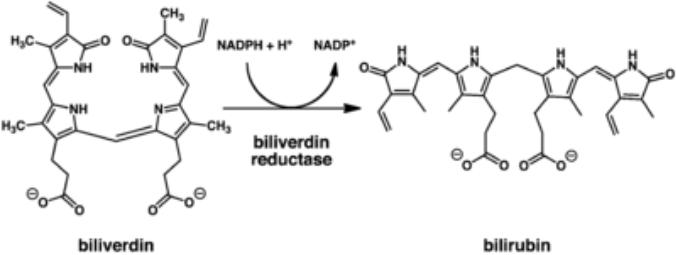
- •Liver
- •Liver and detoxification
- •The first way of intoxication
- •The second way of intoxication
- •Liver and carbohydrate metabolism
- •Liver and protein metabolism
- •Liver and fat metabolism
- •Liver and blood coagulation
- •Liver and hormone inactivation
- •Liver and Vitamins
- •Depot and excretory role of a liver
- •Reactive Oxygen Species (ROS)
- •Cellular Defense Against ROS
- •Thymol test
- •Quantitative determination of serum alkaline phosphatase (ALP) activity
- •Role of kidneys in water-salt metabolism
- •Regulation of sodium excretion. Renin
- •Regulation of sodium excretion. Renin
- •Antinatriuretic system
- •Natriuretic system
- •Urine
- •Physico-chemical properties of urine
- •Proteinuria
- •Functional proteinuria
- •Organic proteinuria
- •Prerenal proteinuria
- •Renal proteinuria
- •Postrenal proteinuria
- •False proteinuria
- •Qualitative determination of protein in urine
- •Glucosuria
- •Causes of Glycosuria
- •Extrainsular glucosuria
- •Hepatic and renal glucosuria
- •Primary and secondary glucosuria
- •Insular glucosuria
- •Clinical diagnostic value
- •Fructosuria
- •Ketonuria
- •Detection of ketone bodies in urine
- •Bilirubinuria
- •Qualitative detection of bile pigments in urine
- •Saliva
- •Chemical composition of saliva
- •Saliva proteins
- •Biological role of saliva
- •Mucins
- •Lysozyme
- •Saliva Whey Proteins
- •Ferrous enzymes

Bilirubinuria
Let’s write!
Bilirubinuria is a condition in which the content of bilirubin in the urine increases and highquality tests for bilirubin become positive. Bilirubin appears in the urine with an increase in the concentration of bound bilirubin in the blood more than 35–85 μmol / L, with a norm of 8.55–20.5 μmol / L. For a day in an adult, 250-350 mg of bilirubin is formed. Normally, in the urine, bilirubin is not determined by routine methods.

Qualitative detection of bile pigments in urine
Rodine test: the principle is based on the oxidation of urine bilirubin to biliverdin under the influence of various reagents.
In normal urine, bile pigments are not detected by laboratory diagnostic methods. Bile pigments are found in urine with parenchymal and obstructive jaundice, when a message appears between the hepatic passages and blood vessels due to a violation of the integrity of the liver cells or changes in the permeability of their membranes. “Direct” (bound) bilirubin enters the bloodstream. This bilirubin is filtered into the urine. Bilirubinuria develops.
Saliva |
Let’s write! |
Saliva is the secret of the salivary glands secreted into the oral cavity and involved in digestion. In the performance of biological functions, mixed saliva is involved, which is a mixture of secrets of the salivary glands, microflora of the oral cavity and its metabolic products, desquamated epithelial cells of the oral mucosa. Up to 2 liters of saliva are released daily in an adult. Mixed saliva is viscous (due to glycoproteins), turbid (due to microflora and desquamated epithelial cells) biological fluid, the pH of which depends on the state of the oral cavity and the nature of the food (in plant foods, the pH of saliva shifts to the alkaline and animal pH to the acid side)

Chemical composition of saliva
Water |
|
Dense residue (0.5%) |
|
99,5% |
Organic substances |
Mineral substances |
|
|
Proteins (enzymes): |
Anions |
Kations |
|
|
|
|
|
amylase, maltase, lysozyme |
Chlorides |
Sodium |
|
|
|
|
|
Residual nitrogen |
Phosphates |
Potassium |
|
|
|
|
|
Monohydrohydrates |
Bicarbonates |
Magnesium |
|
|
|
|
|
Lipids |
Bromides |
Calcium |
|
|
|
|
|
Vitamins |
Fluorides |
and others |
|
|
|
|
|
Hormones |
Rodanides |
|
|
|
|
|
